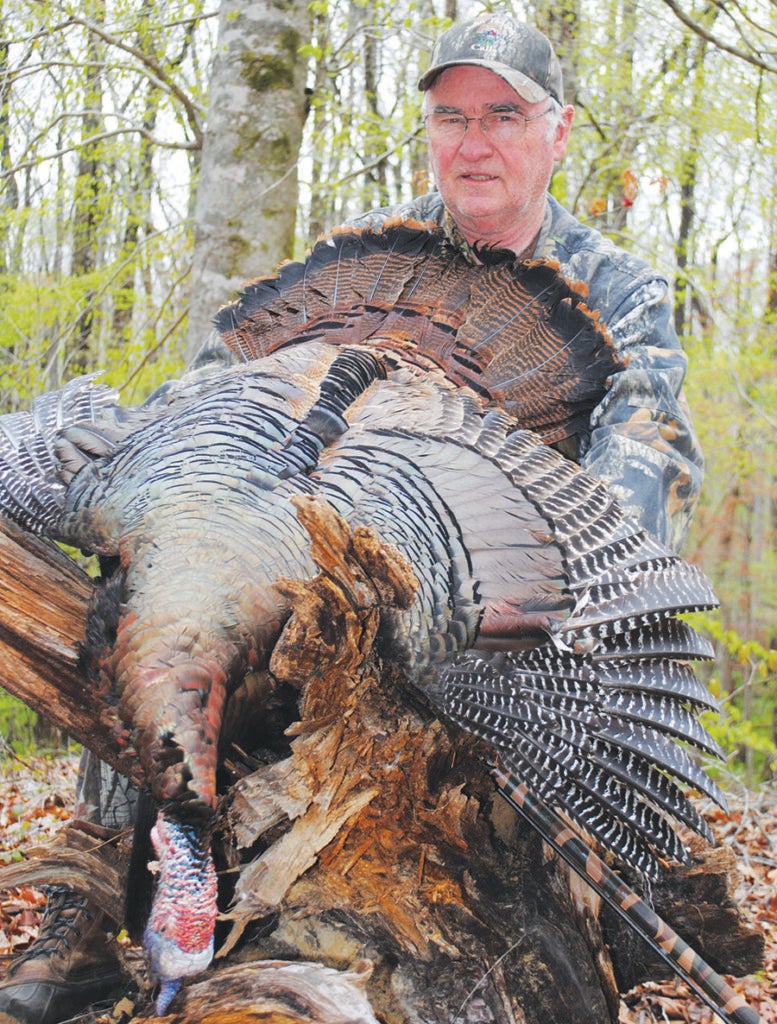Get a leg up by scouting spring gobblers
Published 1:48 pm Friday, March 15, 2024
|
Getting your Trinity Audio player ready...
|
 I was thinking the other day that I really need to start scouting for turkey season. It will be about 3 weeks down the road that North Carolina’s statewide wild-turkey season opens, and the last time I was on my hunting property was during deer season.
I was thinking the other day that I really need to start scouting for turkey season. It will be about 3 weeks down the road that North Carolina’s statewide wild-turkey season opens, and the last time I was on my hunting property was during deer season.
I’m getting a little antsy, because by now, I’ve normally driven the 30 minutes or so to my lease a couple of times and started getting a little bit of an idea what we’ll be facing when April 13 rolls around – me not having anyone in the family to take during the April 6-12 youth seasons.
That led me to think about the actual feat of preseason turkey scouting – especially compared to scouting before deer season. I doubt there’s a deer hunter around who doesn’t spend dozens of hours stomping around the woods and fields in August and early September, before archery season arrives, and in the case of those of us who don’t get started until muzzleloader season arrives, even putting in time through October.
The blackpowder and gun seasons in my neck of the woods cover about 2 months. Turkey season spans five Saturdays, maybe half the length of deer season, and I know most turkey hunters don’t spend half as much time scouting for gobblers and hens as they do looking for bucks and does. And arguably, knowing where turkeys are living and moving before you enter the woods in the dark opening morning may be just as important as knowing about whitetails’ habits.
At the Dixie Deer Classic in Raleigh a couple of weeks ago, as is my annual habit, I happened by the booth of Fred Cox’s Grand Slam turkey calls, ostensibly to buy my annual mouth call and dream about owning one of the beautiful wingbone calls he sells – he won the wingbone division at the National Wild Turkey Federation’s convention in 2012.
We started talking about scouting for turkeys. Cox lives in Reidsville, in Rockingham County, which may be the best county in North Carolina for big bucks and big gobblers; there are plenty of both. He had some definite ideas about getting into the woods before the season and what to look for.
“I’m looking for areas with turkey scratching, and I’m looking for tracks, but I don’t rely on them as much as fresh scratching,” Cox said. “Close to the beginning of the season, I’ll go out (at daylight) and listen and see if I can hear turkey gobbling.”
Fresh scratching is the No. 1 evidence that birds are using an area. While leisurely wandering through the woods, turkeys will reach out with one foot, then the other, and pull leaves back, leaving the soil uncovered. That makes their search for acorns and for the grubs they love to find just at or under the soil’s surface much easier. Often, areas that have been scratched will have no particular shape, but often, they’ll appear as triangles, with the “point” pointing in the direction they’re headed.
Look in old logging roads, around field edges, and especially on oak flats where acorns were plentiful the previous fall. Those are the kinds of areas that turkeys use in the spring. Gobblers love old roads because they can be seen by their potential girlfriends from long distances, and their gobbles carry a little bit better in more open areas.
Sandy areas and field edges are great places to look for tracks. The difference between a hen’s track and a big gobbler’s track is distinct; her track will not likely have the fourth toe (the one that points backwards) prominently displayed in the sand or dirt. Like whitetail bucks, turkey gobblers are heavy enough that they often walk with more weight on their “heels” – the rear toe may be very distinct, even with the teen-aged gobblers hunters refer to as “jakes.”
An important note: once the late-winter flocks break up, turkeys will basically take up residence in certain areas, and their daily travels may take them past the same spots, albeit at different times.
At different times in past seasons, I’ve been able to locate a sure sign that turkeys are regularly using an area: dusting spots. These are bowl-shaped depressions in soft soil or sand where turkeys disturb the soil by trying to shake the bugs out of their feathers. They’re most often signs that hens are in an area, but in April, hens are rarely out of hailing distance of gobblers. Another note: turkeys do the most dusting around mid-day, when they’ve finished their first feeding route. An area with several dusting sites may be barren of turkeys at 8 a.m., but come back between noon and 2 p.m., and there’s a much better chance of seeing something.
I use trail cameras when scouting for turkeys almost as much as when scouting for deer. I set them up in open areas where the cameras can catch turkeys a relatively long way off, and trail cameras have the wonderful ability to tell you when those turkeys are strolling past.
Cox will use trail cameras in places where he’s encountered turkeys in past seasons.
“I have a few trail cameras I put out and keep an eye on,” he said. “Say, if I know places where turkeys have been entering a field in years past, I’ll put (a camera) out to see if they’re on the same pattern. But other than that, I don’t use them a lot.”
I tend to lean the other way. I want my trail cameras up and running by mid-March. I’ll have four or five of them out in areas where I saw a lot of scratching – or turkeys – the previous season. Besides giving you an idea where and when turkeys might be using an area, it will do the same thing for turkey hunters as deer hunters: let you know what your local flock looks like in terms of hens, jakes, gobblers and big gobblers. A couple of years ago, we had a bearded hen on camera several times. We never saw her during the season.
It’s been 3 or 4 years since I turned around a trail camera I had near one of my deer stands to look out over a food plot instead of back in the woods at an oak flat. The week or so before the season opened, two gobblers started to show up on camera every morning, in the southeastern corner of the food plot. The last check of the camera, the Thursday morning before the season opened, revealed the two gobblers showing up every morning between 7 and 7:15. They were both boss gobblers, and I was carrying one over my shoulder at 6:47 on opening morning. He weighed 22 pounds, 5 ounces, the second-biggest tom of my 35 years of pursuing turkeys. The second one ran off as his buddy was flopping around; my son killed him 100 yards away the next opening morning: 24 pounds, 12 ounces.
The last and best way to scout is to head to the woods before daylight and listen.
“Close to the season, I’ll go out and listen and see if I can hear turkeys gobbling,” Cox said. “But do not call to turkeys before the season. I don’t even carry a crow or owl call with me. I just go to sit and listen.”
I do just that, normally two days before the season opens. I try to get on a high spot where I can hear a long way off in every direction. I know the terrain enough that if I hear a bird sound off at daylight or shortly thereafter, I can narrow down where he’s roosted to about an acre or two. It doesn’t hurt to listen for hens calling in the trees before they fly down from the roost, and it doesn’t hurt to stay put a few extra minutes and listen to figure out how they approach a roosted gobbler.
If I accidentally sit down on a stump or log to listen and a turkey sounds off within 100 yards of me, I’ll immediately try to crawl out of there asap. I don’t want him seeing me and deciding to live somewhere else. Two seasons ago, I belly-crawled about 20 yards to get behind a log so a couple of hens that had flown down behind me didn’t know I was there. When the gobbler flew down to them, about 75 yards downhill from me, I crawled out 25 yards in the other direction until I got to a logging road where I had some cover and got the heck out of Dodge.
So, spend a few hours, heck, a dozen hours or so, over the next couple of weeks, learning where the birds are using your hunting land.
Getting a leg up on a gobbler is certainly no guarantee of success, but at least you’ll be in the ballgame instead of sitting out in left field.




